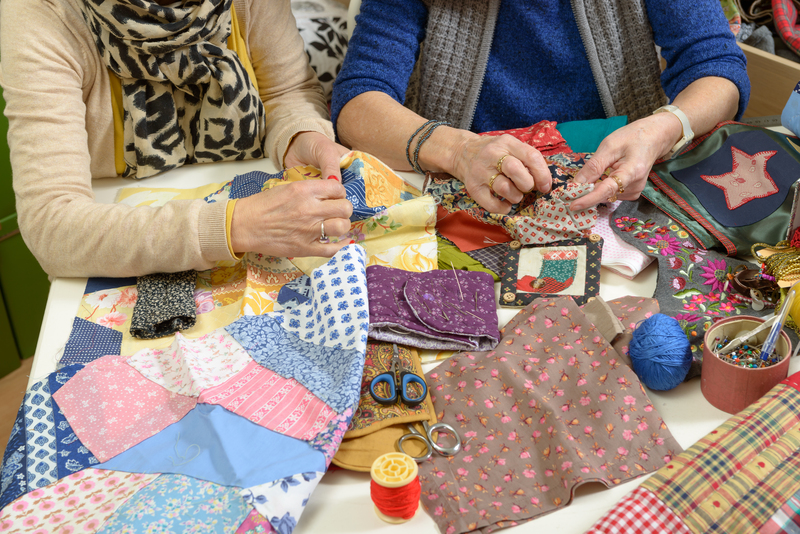Green Ideas to Lessen Your Household Waste
Household waste reduction is rapidly becoming a significant concern for families around the world. As landfills overflow and environmental issues intensify, individuals are seeking green solutions for managing and reducing the trash they create at home. By adopting eco-friendly habits, you can help preserve the planet while saving money and enhancing your quality of life. In this guide, we'll explore actionable, innovative, and sustainable green ideas to lessen your household waste that you can begin implementing right away.
Why Reducing Household Waste Matters
Cutting down on domestic rubbish offers countless benefits. **Lessening your household waste** helps minimize environmental impact, reduces your carbon footprint, conserves natural resources, and often leads to a simpler, more organized home. According to the Environmental Protection Agency (EPA), the average American generates approximately 4.9 pounds of trash each day. That's almost 1,800 pounds annually per person!
- Reduces landfill use: Less waste means fewer items end up in overflowing landfills, decreasing pollution and conserving space.
- Conserves resources: Reusing and recycling help preserve raw materials, such as trees and minerals.
- Lowers greenhouse gases: Organic waste in landfills emits methane, a potent greenhouse gas. Limiting waste reduces these emissions.
- Saves money: Buying less and reusing more means keeping more cash in your pocket.
- Promotes sustainability: Adopting eco-conscious habits helps ensure a healthier planet for future generations.

Actionable Green Ideas to Reduce Household Waste
Let's break down a variety of easy-to-implement green practices that allow you to cut down on household waste and create a more sustainable home environment.
1. Embrace the 5 R's: Refuse, Reduce, Reuse, Repurpose, Recycle
The traditional "reduce, reuse, recycle" mantra has evolved into the comprehensive 5 R's for effective household waste reduction:
- Refuse: Say "no" to single-use plastics and unnecessary packaging. Opt out of free promotional items unless you truly need them.
- Reduce: Purchase only what you need to avoid unnecessary waste, especially with perishable items.
- Reuse: Choose products that can be used multiple times, such as glass jars, shopping bags, and water bottles.
- Repurpose: Get creative by turning glass containers into storage jars or using old t-shirts as cleaning rags.
- Recycle: Separate recyclables from household trash and correctly dispose of items as per your municipality's guidelines.
2. Make Composting a Daily Habit
Food scraps, coffee grounds, eggshells, and yard trimmings contribute significantly to household garbage. Home composting is a fantastic way to transform organic waste into rich fertilizer for your garden, reducing the amount of methane-producing waste sent to landfills.
How to Start Composting:
- Designate a small bin for compostable materials in your kitchen.
- Place food scraps, used paper towels, and yard clippings into the bin.
- Move contents to an outdoor compost pile or use a countertop composter for small spaces.
- Follow basic composting guidelines: mix green (nitrogen-rich) and brown (carbon-rich) materials, and keep the pile moist but not soggy.
3. Rethink Single-Use Items
Single-use products--such as plastic bags, straws, razors, and plates--are among the largest contributors to household waste. Attack this problem with the following *household waste-reducing ideas*:
- Switch to reusables: Invest in metal straws, bamboo cutlery, cloth napkins, beeswax wrap, and glass containers for storing food.
- Shop with eco-bags: Bring reusable shopping bags to groceries and other retail stores.
- Eliminate bottled water: Use water filters and refillable bottles instead of buying plastic water bottles.
4. Buy in Bulk and Choose Minimal Packaging
Shopping at stores that offer bulk items enables you to buy only the quantity you need and reduces excess packaging waste. Pay attention to how products are packaged:
- Choose wisely: Opt for products with recyclable or compostable packaging.
- Bring your own containers: Many bulk stores let you use your containers or bags for grains, spices, pasta, and more.
- Avoid individually wrapped items: Single-servings often mean more packaging waste.
5. Repair, Don't Replace
Instead of discarding broken items, see if they can be mended. Learning simple repair techniques saves money and reduces your waste footprint:
- Mend torn clothing or sew on buttons instead of buying new.
- Fix small appliances or furniture rather than replacing them.
- Seek out local repair cafes or online tutorials to help restore items to working order.
6. Donate or Sell Unwanted Items
One person's trash is another's treasure! Declutter responsibly by:
- Donating gently used clothes, books, and toys to charities or thrift shops.
- Selling online or at garage sales to give new life to unwanted items.
- Joining "Buy Nothing" or freecycle groups in your area to swap items instead of discarding them.
7. Practice Smart Paper Management
Piles of junk mail, packaging, and office documents can quickly become a major source of household paper waste.
- Opt for digital options: Go paperless for bills, subscriptions, and statements.
- Unsubscribe from junk mail: Use online services to remove your name from advertising lists.
- Use both sides of paper: Print or write on both sides to maximize paper use.
- Recycle or shred responsibly: Shred and compost paper, or recycle it according to local guidelines.
Eco-Friendly Kitchen Habits to Minimize Waste
Plan Meals and Shop Smart
Food waste can be drastically reduced by planning meals ahead and buying only what you need. Try these waste-reducing kitchen tips:
- Make shopping lists: Stick to your list to avoid impulse buys that may end up tossed out.
- Rotate pantry items: Place older products at the front to use them before they expire.
- Understand best-by dates: Many foods are still safe shortly after expiration; use your senses to judge freshness.
- Embrace leftovers: Repurpose extra food into soups, casseroles, or lunches for the next day.
Preserve Food and Reduce Spoilage
Extending the shelf life of food means less waste and more savings:
- Freeze surplus: Freeze fruits, vegetables, or leftovers before they spoil.
- Store correctly: Use airtight containers and proper refrigeration methods for each food group.
- Try canning and pickling: Preserve excess produce during peak seasons.
Bathroom and Laundry Room Waste Reduction Tips
Switch to Sustainable Personal Care
The bathroom is a surprisingly wasteful part of many homes. Adopt these *green living ideas* to lessen your ecological impact:
- Try zero-waste products: Use bar soap and shampoo, refillable toothpaste, and compostable floss.
- Choose bamboo: Opt for bamboo hairbrushes, toothbrushes, and cotton swabs over plastic alternatives.
- Menstrual products: Switch to reusable cloth pads, menstrual cups, or period underwear.
Efficient Laundry Practices
- Full loads only: Save water and energy by running your washer with full loads.
- Cold water washing: Reduces energy consumption and extends the life of your clothes.
- Avoid dryer sheets: Try reusable dryer balls or simply line dry where possible.
- Homemade detergents: Reduce packaging waste by making your own laundry powder or liquid, or purchasing from refill stations.
Children and Household Waste: Teaching Future Generations
Getting kids involved in reducing home waste not only teaches responsibility but also plants the seeds for lifelong eco-friendly habits.
- Make it a game: Challenge young ones to spot recyclable or compostable items and reward good practices.
- Crafting with recyclables: Use paper rolls, boxes, and bottles for creative arts and crafts projects.
- Educate with stories: Read books or watch shows that reinforce green themes and positive environmental actions.
Set a Family Example
When adults model eco-conscious behavior, children quickly adopt similar habits. Consistency is key: use reusable bags, separate trash, and avoid littering together.
Technology and Apps for Managing Waste
Modern technology can streamline the process of reducing and managing household waste. Try these digital tools:
- Compost apps: Apps such as ShareWaste or CompostNow help you find composting options locally.
- Recycling guides: Municipal recycling apps inform you what goes in each bin.
- Food tracker tools: Use apps like OLIO to share surplus food with neighbors or log what's in your pantry.

Going Beyond: Community Involvement and Advocacy
One of the best green ideas to reduce household waste is to get involved beyond your own home:
- Initiate recycling or composting programs at school, work, or in your neighborhood.
- Advocate for better recycling facilities or waste policy with your local government.
- Participate in local clean-up events or sustainability fairs to make a bigger impact.
Conclusion: Small Steps, Big Impact
Lessen your household waste with mindful choices and changes to everyday habits. Even a few simple adjustments--like swapping single-use items, composting food scraps, or teaching your children about sustainability--can spark a significant change. By implementing these comprehensive green ideas, you'll not only cut down on waste at home but also inspire a broader movement towards a healthier, more sustainable planet.
Remember: Every plastic bottle refused, every item repaired, and every piece of organic matter composted adds up to a better future. Start with just one or two eco-friendly practices and watch your waste--and environmental impact--slim down over time. If every household embraces these ideas, together, we can create a lasting green legacy for generations to come.